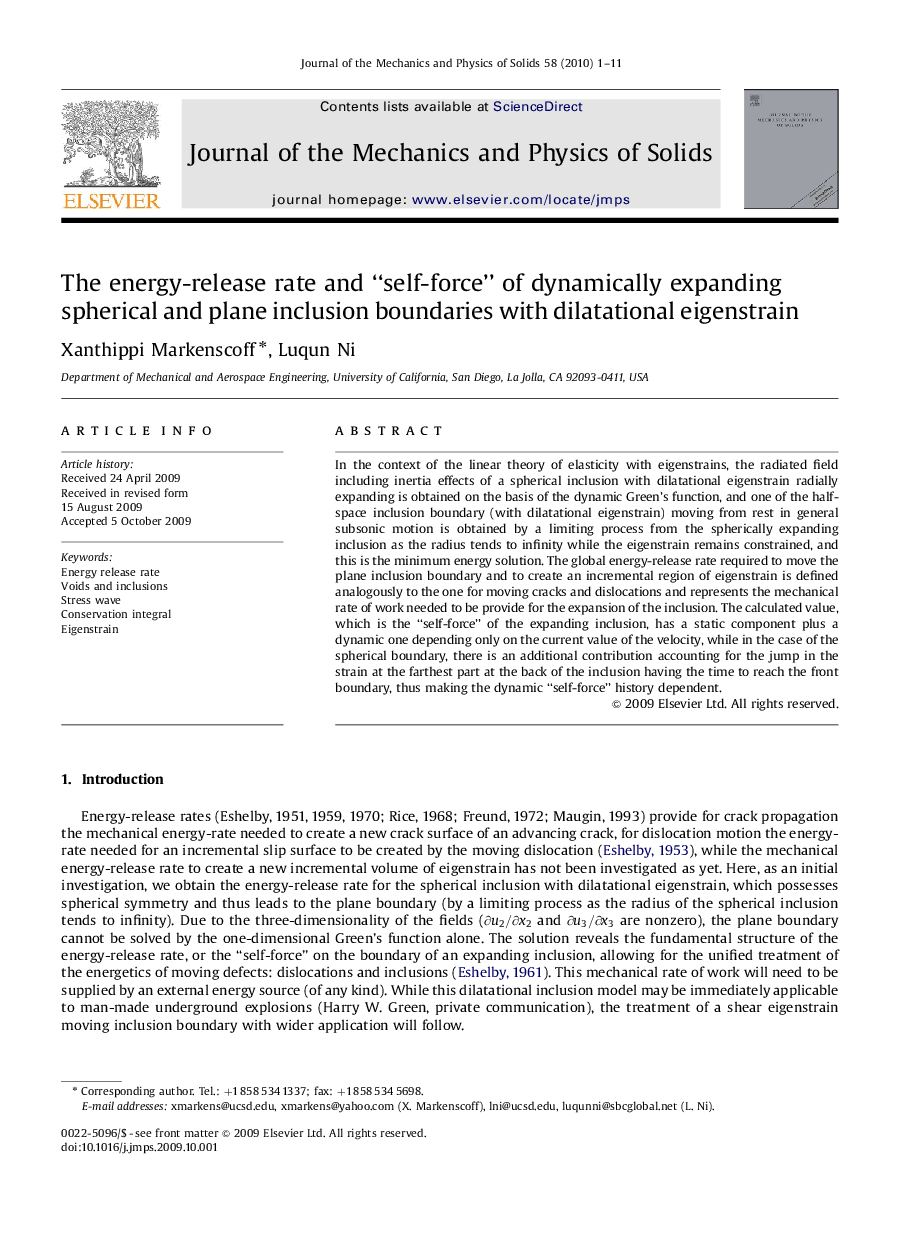| کد مقاله | کد نشریه | سال انتشار | مقاله انگلیسی | نسخه تمام متن |
|---|---|---|---|---|
| 793810 | 1467129 | 2010 | 11 صفحه PDF | دانلود رایگان |

In the context of the linear theory of elasticity with eigenstrains, the radiated field including inertia effects of a spherical inclusion with dilatational eigenstrain radially expanding is obtained on the basis of the dynamic Green's function, and one of the half-space inclusion boundary (with dilatational eigenstrain) moving from rest in general subsonic motion is obtained by a limiting process from the spherically expanding inclusion as the radius tends to infinity while the eigenstrain remains constrained, and this is the minimum energy solution. The global energy-release rate required to move the plane inclusion boundary and to create an incremental region of eigenstrain is defined analogously to the one for moving cracks and dislocations and represents the mechanical rate of work needed to be provide for the expansion of the inclusion. The calculated value, which is the “self-force” of the expanding inclusion, has a static component plus a dynamic one depending only on the current value of the velocity, while in the case of the spherical boundary, there is an additional contribution accounting for the jump in the strain at the farthest part at the back of the inclusion having the time to reach the front boundary, thus making the dynamic “self-force” history dependent.
Journal: Journal of the Mechanics and Physics of Solids - Volume 58, Issue 1, January 2010, Pages 1–11